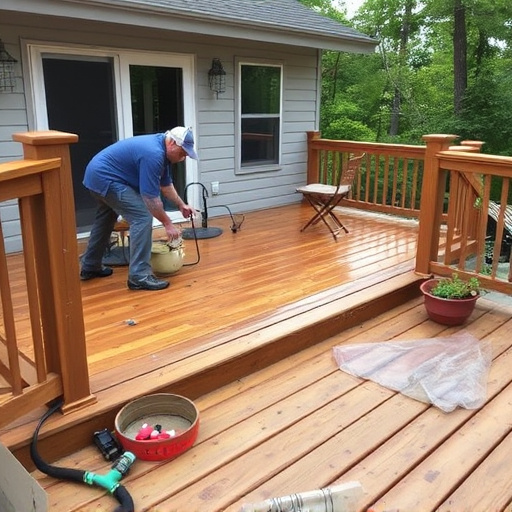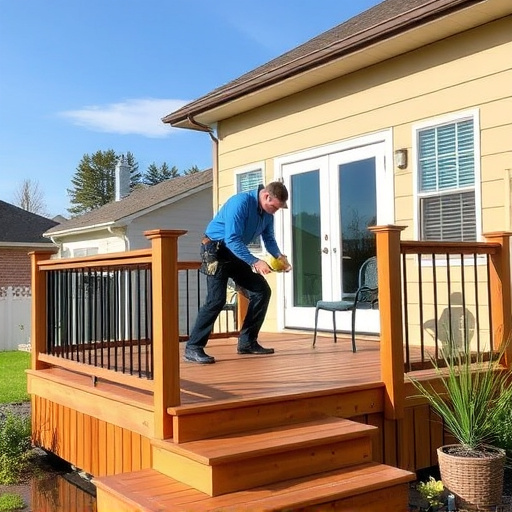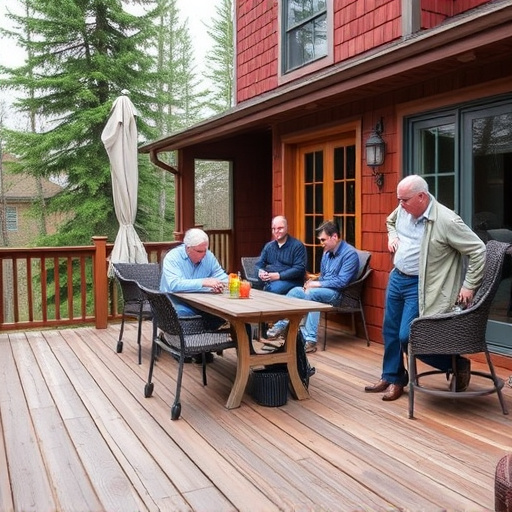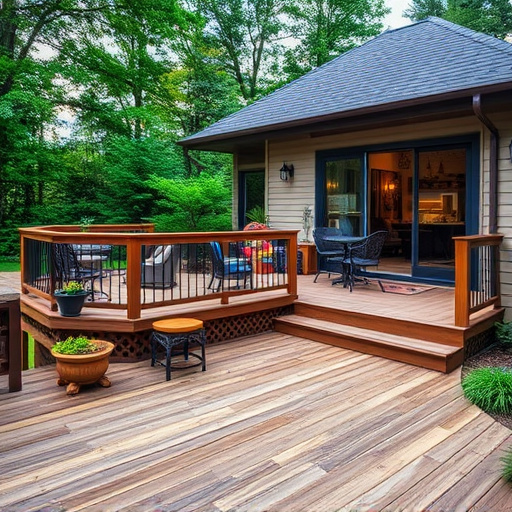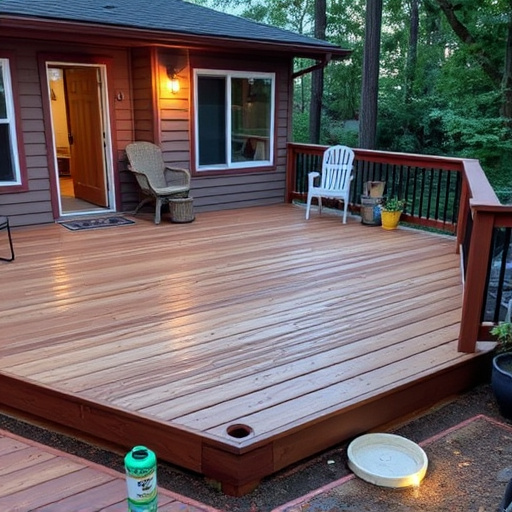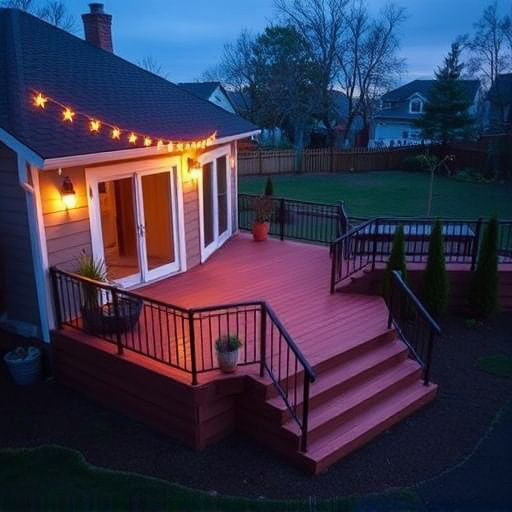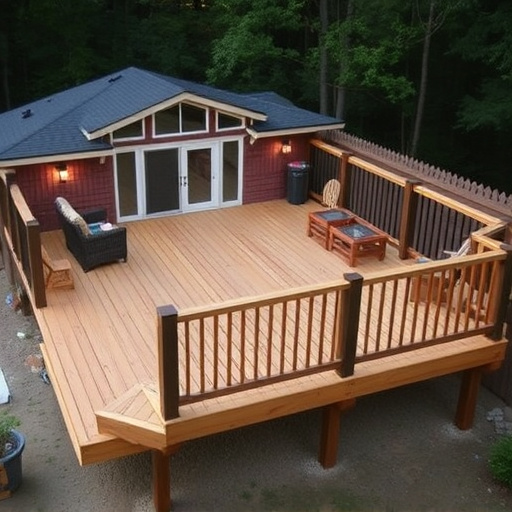Commercial decking regulations prioritize safety and property values through material composition, construction methods, and compliance with local, state, national codes. Businesses must invest in high-quality materials, expert consultation, regular inspections, and slip-resistant surfaces for structural integrity, load capacity, and fire safety. Adhering to these standards enhances durability, minimizes risks, and aligns with residential siding requirements.
Commercial decking, more than just a structural element, is a safety critical component in any public or industrial space. As such, it must meet stringent codes and regulations. This article delves into understanding these regulations, exploring materials and design that ensure safety compliance, and discussing strategies for longevity and risk mitigation in commercial decking applications. By adhering to these practices, businesses can create safe, durable environments.
- Understanding Commercial Decking Regulations
- Materials and Design for Safety Compliance
- Ensuring Longevity and Risk Mitigation
Understanding Commercial Decking Regulations

Commercial decking regulations are designed to ensure safety for businesses and their patrons, as well as to maintain property values. These rules cover a wide range of aspects, from material composition and construction methods to installation standards and ongoing maintenance. Compliance with local, state, and national codes is not just a legal requirement but also a key factor in preventing accidents and ensuring the longevity of the decking structure.
Businesses investing in commercial decking should be aware of the regulations specific to their location, focusing on structural integrity, slip resistance, load capacity, and fire safety. Regular inspections and prompt storm damage repair are crucial components of maintaining these standards. Engaging with expert roof consultants can provide valuable guidance in navigating the complex landscape of commercial roofing regulations, ensuring that any decking installation or renovation meets all necessary code requirements.
Materials and Design for Safety Compliance
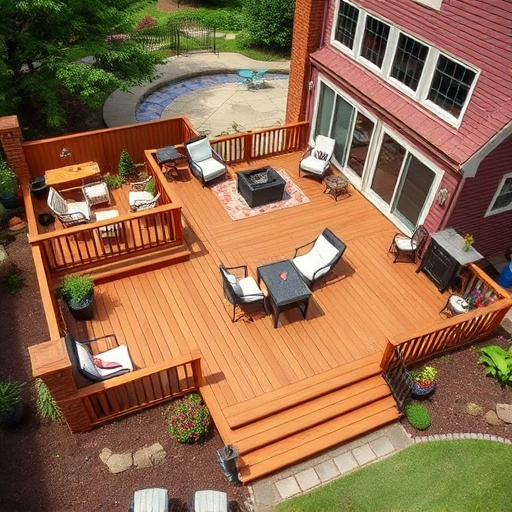
When it comes to commercial decking, prioritizing safety is paramount. The chosen materials play a pivotal role in ensuring structural integrity and compliance with relevant building codes. High-quality decking materials like treated lumber, composite wood, or metal alloys are ideal for their durability and resistance to decay, rot, and fire hazards. These options offer long-lasting performance while adhering to strict safety standards.
Designing commercial decks requires careful consideration of load capacities, slip-resistant surfaces, guardrails, and other safety features. Incorporating these elements not only meets code requirements but also minimizes the risk of accidents for both occupants and maintenance personnel. Moreover, integrating robust fastening systems and regular roof replacement or repair services ensures the deck remains secure and safe over time, enhancing the overall functionality and longevity of the structure.
Ensuring Longevity and Risk Mitigation
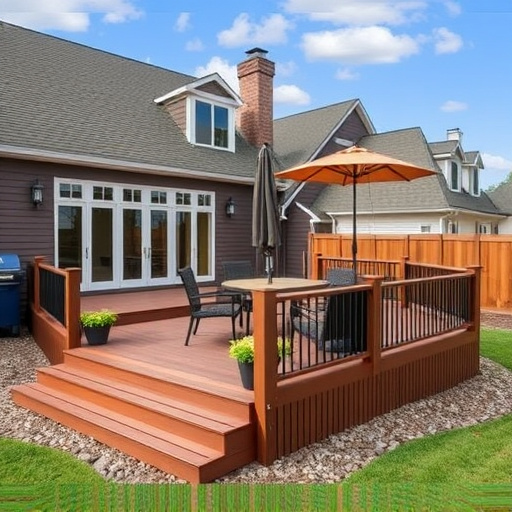
In the realm of commercial decking, ensuring longevity and risk mitigation are paramount. High-quality materials and meticulous construction techniques play a pivotal role in achieving durability that stands the test of time. By selecting robust decking options suitable for commercial settings, businesses can safeguard their investments against premature wear and tear. This not only reduces maintenance costs but also minimizes downtime, keeping operations seamless.
A comprehensive roof consulting process is essential to understand specific safety and code requirements, especially in diverse climates. Incorporating fire-resistant decking or materials that offer superior slip resistance can significantly lower risk profiles. For instance, exterior home improvements with well-designed commercial decking not only enhance curb appeal but also contribute to safer environments, aligning perfectly with residential siding standards for enhanced structural integrity.
Commercial decking that adheres to safety standards and building codes is not only a legal requirement but also a wise investment. By understanding local regulations, selecting robust materials, and implementing thoughtful design principles, businesses can create durable and secure outdoor spaces. Prioritizing longevity and risk mitigation ensures these decks serve as safe havens for years to come, enhancing the overall value of any commercial property.




